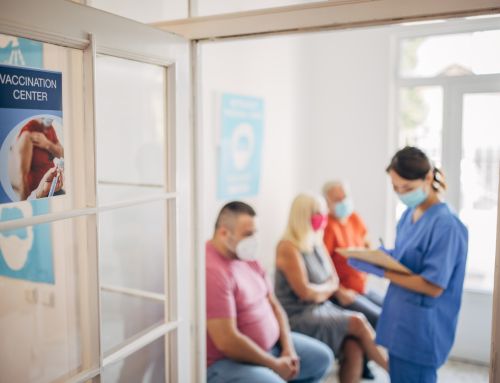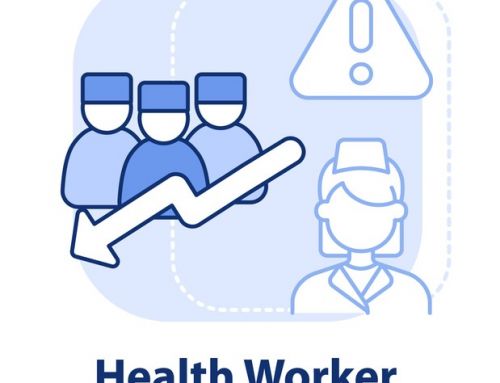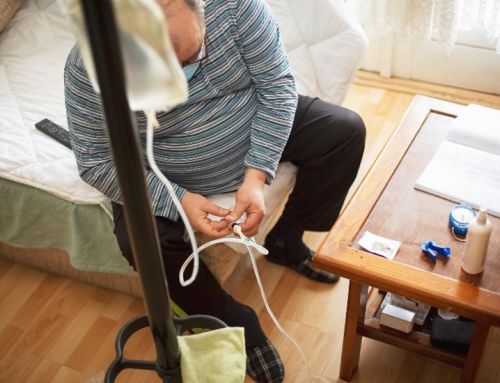Hon. Marilyn Tavenner, Administrator
Centers for Medicare and Medicaid Services
Department of Health and Human Services
Hubert H. Humphrey Building
200 Independence Avenue, SW
Washington, D.C. 20201
Re: CMS-1614-P: End-Stage Renal Disease Prospective Payment System, Quality Incentive Program, and Durable Medical Equipment, Prosthetics, Orthotics, and Supplies
Dear Administrator Tavenner:
Dialysis Patient Citizens (DPC) appreciates the opportunity to provide the Centers for Medicare and Medicaid Services (CMS) with comments on the proposed payment rule for the Medicare End Stage Renal Disease (ESRD) program. As America’s largest patient-led organization representing dialysis patients, DPC’s membership consists of more than 26,000 dialysis and pre-dialysis patients and their families. We seek to ensure the patient point of view is considered by policy makers.
DPC’s mission is to improve the quality of life of dialysis patients by engaging policy makers, providers and the public. Through patient education, empowerment and advocacy, we work to increase awareness about kidney disease and promote favorable public policy. However, improving quality of life for patients can only go so far without improving the quality of care patients receive. DPC knows that a diagnosis of ERSD does not mean the end of life. Dialysis patients can lead long and productive lives because Congress and CMS have shown commitment to ensuring patients have access to quality kidney care. It is for these reasons that we respectfully submit comments on the NPRM.
I. Payment Issues
The base payment proposed for 2015 is roughly the same as it is in 2014, following a directive from Congress. That said the cost of care continues to increase, so even though payment remains the same, providers will be asked to do more with the same level of funding.
The rebasing of the payment formula increases the weight accorded to labor costs (which vary geographically) and decreases the weight accorded to drug costs (which are the same everywhere). This means that more of the overall dialysis budget will be directed to facilities in regions with a high cost of living, and less to areas with a low cost of living. This is expected to reduce payments to rural facilities by a little over one percent next year, but is projected to have a greater impact in future years.
As MedPAC indicated in its March 2014 Report to Congress, cost per treatment is inversely related to the volume of treatments a dialysis facility furnishes. The two quintiles of facilities with the lowest volume have negative Medicare margins (-13% and -3.4%), with a negative margin for rural facilities overall. It is worrisome that CMS is making changes to the market basket that exacerbate this problem while not contemporaneously addressing the plight of rural and low-volume facilities. These concerns are heightened by the proposed addition of readmission penalties to the QIP, given the experience on the hospital side of readmission penalties hitting disadvantaged rural regions so hard. All of these factors aggregate together into a disincentive for providers to maintain or expand their presence in rural areas. CMS needs a long-term plan to ensure access to dialysis for rural patients that relies on something stronger than the hope that large dialysis organizations will continue to cross-subsidize unprofitable facilities.
II. Quality Incentive Program
While we support the Quality Improvement Program’s focus on setting performance standards for each clinic, patients are mindful of and on occasion cynical about how it is structured: to penalize clinics that do not meet or make progress toward the standards by cutting their payments by up to two percent, rather than redistributing funds among clinics in the manner of the Hospital Value-Based Purchasing Program. We recognize that the purpose is to incentivize providers to do a better job by tying pay to performance, but it is vexing that the program accomplishes this by removing funding from the nation’s kidney care infrastructure. As such, policy changes that would be welcomed if the program operated like HVBP can provoke a wary response from patients.
DPC has been using our annual patient survey to assess patients’ support for and understanding of the QIP. In our most recent survey, conducted during the month of July, 41 percent of respondents indicated that they had seen a poster in their dialysis facility pertaining to the QIP. Of those, 28 percent could correctly identify the purpose of the QIP program. This means that only about one in ten patients has engaged with this program. When we asked patients what they thought was the best way of ensuring high-quality dialysis care, 21 percent cited pay-for-performance and 16 percent cited public reporting of quality measures.
Recommendation 1: Patient Satisfaction Survey Results Should Count Toward QIP Payment Reductions.
We surveyed our members on whether CAHPS scores should be counted in the QIP and they overwhelmingly support this policy. Counting the survey results should incentivize dialysis facilities to improve their environment, as well as amplifying the patients’ voice when giving feedback on their experience.
For several years now, dialysis facilities have administered the “CAHPS” survey to patients. However, under current regulations, dialysis facilities are only required to give the survey; poor results are not held against the facility in determining the payment. If the proposed rule is finalized, survey results would be tabulated and taken into account in determining the QIP penalty.
In Medicare’s pay-for-performance system for hospitals, CAHPS survey results count toward bonuses and penalties. On the hospital side, observers have taken notice that hospitals are behaving much differently now that patient surveys affect their payment. For instance, hospital personnel, it is said, are ensuring a quieter environment for patients.
Recommendation 2: The QIP Should Include a Bloodstream Infection Measure.
DPC supports inclusion of an infection prevention measure in the QIP for accountability purposes. Unless a better measure is advanced, DPC recommends facility performance on the National Healthcare Safety Network (NHSN) bloodstream infection measure. As a member of the Centers for Disease Control and Prevention (CDC) Dialysis Bloodstream Infection (BSI) Prevention Collaborative, we were pleased to see that facilities participating in the Collaborative’s BSI “intervention package,” which was centered around NHSN reporting and feedback, reduced infection rates by 32 percent. We believe that access-related infections are largely within the ability of facilities to keep under control.
Recommendation 3: The QIP Should Include an Anemia Management Measure.
We believe dialysis facilities should be held responsible through the QIP for ensuring that patients maintain a blood hemoglobin level that produces optimal health outcomes and improved patient quality of life. The new rule proposes to monitor the transfusion ratio for each facility and penalize those facilities whose patients are disproportionately requiring transfusions. This proposal is consistent with MedPAC’s March 2014 recommendation and we support it.
Previously, facilities were scored on how well they kept hemoglobin levels above a lower limit and how well they kept hemoglobin levels below an upper limit. The lower limit was eliminated after the labeling for Epogen was changed. This was of concern to patient advocates, because concurrent changes in the bundled payment altered the financial incentives to favor under-utilization rather than over-utilization. According to the United States Renal Data System (USRDS), between the beginning of 2010 and the first six months of 2012, the percentage of hemodialysis patients receiving red blood cell transfusions increased from 2.7-2.9 percent to 3.3-3.8 percent.1 For various reasons, including an already limited blood supply, risk of infections and the potential to interfere with kidney transplantation, anemia management treatments that rely on transfusions are far from ideal for most dialysis patients.
Recommendation 4: Do Not Include Hospital Readmissions Rates in the QIP.
We recognize the importance of policy interventions to lower the rate of preventable hospitable readmissions. A “hospital readmission” occurs when a patient is discharged from the hospital and then comes back to the hospital within 30 days because of the same condition. Historically this has happened in about 20 percent of Medicare patients, but to more than 30 percent of dialysis patients. Current law focuses on penalizing hospitals with the highest rates. Along with the penalty there have been numerous other activities undertaken to improve patients’ transitions from the hospital back to the community.
The new rule proposes that dialysis facilities will also be penalized for readmissions of their patients. This proposal is controversial. A panel of the National Quality Forum (NQF) debated this proposal several months ago, and voted 13-11 to approve it. However, because NQF endorses measures only by consensus, a closely-divided vote like this was insufficient for approval. Arguments in favor of endorsing this measure included:
- This is an area where there should be opportunity for improvement—specifically, it is known that if a patient sees his or her nephrologist an additional time in the month after a hospital discharge, the chances of a readmission are lowered by 3.5%.
- Patients spend an average of 9-12 hours in dialysis units each week, so there ought to be an opportunity for the facility to improve their transition of care.
The arguments against endorsement included:
- Dialysis facilities typically are not notified that a patient was in the hospital, nor given access to hospital medical records. By contrast, since assessment of the readmission penalty and concurrent implementation of other activities, hospitals often have a staff member dedicated to discharge follow-up and can arrange appointments with the nephrologist when the patient is discharged.
- About 16 percent of patients are readmitted before they are seen in a dialysis center.
- Dialysis facilities cannot compel a nephrologist to see a patient immediately after the patient is discharged because the doctor is not an employee of the facility.
We do not think that the time is right to add such a measure to the QIP. We recognize the desire to use payment adjustments to reshape the fragmented nature of fee-for-service Medicare into a more integrated and seamless experience for the patient. But the fact remains that multiple independent provider entities touch dialysis patients, each of whom is paid separately, and the policymaker’s diktat cannot erase this.
Further fueling our skepticism is the disturbing pattern of assessment of readmission penalties on hospitals serving disadvantaged patients. An expert panel of the National Quality Forum is now recommending that readmission penalties must account for patients’ socio-economic status. The Medicare Payment Advisory Commission has made a similar recommendation. Those recommendations are pending before Congress and it will likely be years before a formula that adjusts for poverty and disadvantage can be developed and agreed upon. We believe it would be prudent to pause on extending readmission penalties until a resolution can be reached.
To illustrate the problem, consider Bolivar County, Mississippi. This Delta county, which is 65% African American, includes three of the 50 poorest communities in the United States. The local hospital, Bolivar Medical Center, has one of the highest readmission rates in the US and is penalized 1.5% on all of its Medicare reimbursements (a figure that could rise next year when the maximum penalty increases from 2% to 3%).
There is one dialysis facility in Bolivar County. Presumably, if readmissions of ESRD patients are proportionately as high as they are for all Medicare patients there, that facility will also be penalized for excessive readmissions. This raises the question: would an excessive rate of readmissions for those ESRD patients be attributable to poor quality of care at the dialysis facility, poor quality of care at the hospital, or the underlying poverty and poor health of the population being served? Bolivar County has a premature death rate (years of potential life lost before age 75 per 100,000 population) that is double the national average, and triple the rate of Boulder County Colorado, against whose dialysis clinics those in Bolivar County must compete in the QIP. Readmissions penalties reduce the flow of Medicare dollars to places like Bolivar County, which only reinforces the economic disadvantage they confront.
MedPAC has recommended that hospitals in places like Bolivar County should not be compared to hospitals in wealthy suburbs like, say, Arlington County, Virginia. They have proposed ranking hospitals within “peer groups.” Under such a system, hospitals in, for instance, the Delta region would be compared to each other, and only the hospitals that perform most poorly relative to similarly situated peers would be penalized. We believe that a peer grouping system should be instituted for dialysis facilities prior to incorporation of further outcome measures in the QIP.
Recommendation 5: Ensure that the QIP Complies with Federal Plain Language Policy.
Finally, we urge that CMS revise the nomenclature it uses in describing categories of measures collected in the QIP. CMS has used the term “clinical” measure to describe measures for which the penalty can be assessed, and “reporting” measure to describe data collection activities that are required but for which data values do not figure in calculation of the penalty. We believe this verbiage is confusing and may contribute to lack of understanding of the QIP by patients. This issue made an impression on us earlier this year when a CMS contractor submitted to us an article for our newsletter attempting to explain the QIP scoring system to patients; its use of CMS’ unusual jargon made the article incomprehensible to lay readers.
Federal Plain Language requirements advise agencies: “Never define a word to mean something other than its commonly accepted meaning.” The QIP nomenclature violates this on several counts:
- The term “clinical” is commonly accepted to refer to medical treatment or practice; CMS has been using to it refer to inclusion in a pay-for-performance program. We suggest using the term “accountability measures,” which is favored by the Joint Commission and National Quality Forum to distinguish between measures used for payment or public reporting and those used for other types of analysis.
- The term “clinical” is even less apt now that CAHPS scores, which encompass patient experience beyond medical treatment or practice, are proposed to be included in calculation of the penalty.
- The term “reporting” is commonly used in the context of health care transparency to refer to public reporting of measures. However, the QIP uses it to refer to measures that are not reported to the public. We suggest using the phrase “required data submission” or something that similarly gives an accurate description of the facility’s obligation.
Thank you again for your consideration of our comments and concerns. If you have any questions or would like additional information, please do not hesitate to contact me or our Government Affairs Director Jackson Williams.
Sincerely,
Hrant Jamgochian, J.D., LL.M.
Executive Director




















